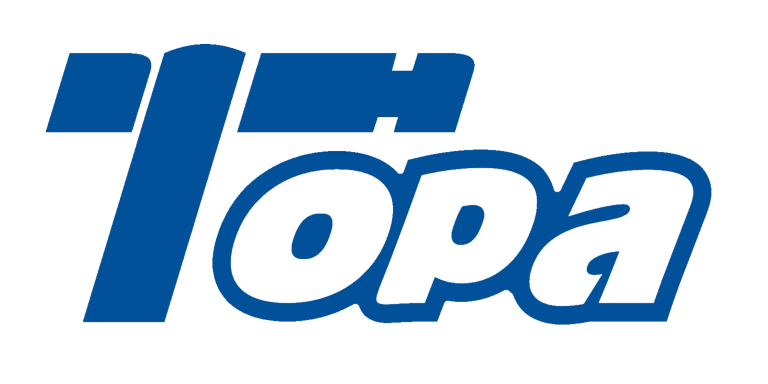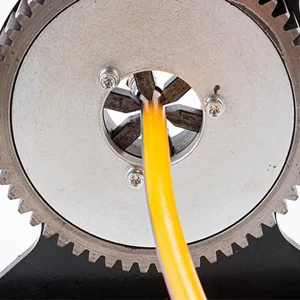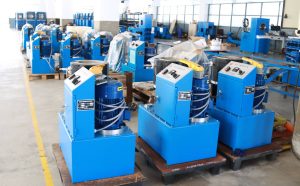When using a hydraulic hose crimper, avoiding common mistakes is crucial for ensuring safety, efficiency, and longevity of your equipment. These errors not only impact the performance of your hydraulic system but can also lead to costly repairs and downtime. In this article, we’ll explore some of the most frequent mistakes and provide solutions to help you achieve optimal crimping results. By understanding and avoiding these errors, you can improve your operations, reduce the risk of accidents, and increase the lifespan of your crimper and hydraulic hoses.
1. What Are the Common Mistakes When Using a Hydraulic Hose Crimper?
The most common mistakes made when using a hydraulic hose crimper often stem from a lack of experience, poor equipment handling, or improper maintenance. These errors can compromise the quality of the crimp, potentially leading to hydraulic system failures.
But here’s the kicker: These mistakes aren’t always obvious at first glance. Often, the signs of a problem only become clear when it’s too late, and the crimp fails under pressure. Here are some of the most frequent mistakes:
● Using Incorrect Pressure: Crimping a hose with too much or too little pressure can cause leaks or an incomplete seal. ● Misaligned Hose and Fitting: If the hose and fitting aren’t properly aligned in the crimper, the result can be an uneven crimp that may fail. ● Choosing the Wrong Die Set: Using the wrong die size for your hose can create a crimp that isn’t tight enough or is too tight, leading to damage.
Understanding these issues and learning how to avoid them can ensure your hydraulic system runs smoothly and safely.
| Common Mistakes | Consequence | Solution |
|---|---|---|
| Incorrect crimping pressure | Leaks, weak seal | Always check the pressure settings before use. |
| Misalignment | Uneven crimp, failure | Double-check alignment before crimping. |
| Wrong die size | Damaged hose or fitting | Use the appropriate die set for each job. |
2. Why Do People Make Mistakes When Using a Hydraulic Hose Crimper?
Many factors contribute to the mistakes made during hydraulic hose crimping. Some of the key reasons include lack of experience, insufficient training, and failure to follow proper procedures.
Ready for the good part? Let’s dive into some of the main causes:
● Lack of Experience: New operators may not be familiar with the mechanics of the crimping machine and how various factors like pressure and alignment affect the result. ● Inadequate Training: Without thorough training on proper techniques and safety procedures, even experienced technicians may overlook essential steps. ● Ignoring Maintenance: Failure to maintain and inspect equipment regularly can lead to misalignment and inconsistent pressure application, which can cause crimping errors.
To mitigate these issues, it’s essential to invest in proper training and regularly inspect both the hydraulic hose crimper and the hoses themselves.
| Cause of Mistake | Impact on Crimping | Solution |
|---|---|---|
| Lack of experience | Increased chance of error | Ensure proper training and practice. |
| Inadequate training | Missed crucial steps | Offer regular training sessions. |
| Poor maintenance | Misalignment or pressure issues | Schedule routine equipment checks. |
3. How Can Incorrect Crimping Pressure Affect Performance?
Crimping pressure plays a pivotal role in the performance of hydraulic hoses. Too much or too little pressure can result in an ineffective or weak crimp, which can fail under high-pressure conditions.
This is where it gets interesting: the proper crimping pressure ensures that the fitting is tightly secured to the hose without damaging either component. Here’s how incorrect pressure can affect the hose:
● Excessive Pressure: When pressure is too high, it can crush the hose, damaging the internal structure and potentially causing leaks. ● Insufficient Pressure: On the other hand, insufficient pressure leads to an incomplete seal, which can result in the hose detaching from the fitting during operation.
Ensuring the correct pressure setting is key to achieving a reliable and secure crimp. Always check manufacturer guidelines for the recommended pressure for each hose and fitting combination.
| Pressure Level | Effect on Crimp | Solution |
|---|---|---|
| Excessive pressure | Hose damage, leaks | Use the recommended pressure level. |
| Insufficient pressure | Weak seal, hose failure | Monitor pressure closely. |
4. What Happens if You Use the Wrong Hydraulic Hose Size?
Choosing the right hose size for your crimping operation is critical. Using a hose that is too large or too small can cause sealing issues, leading to potential leaks or system failures.
What’s the real story? If you use a hose that’s too large, the crimp won’t secure the fitting tightly, creating gaps that allow fluid to escape. If the hose is too small, it could cause the hose to burst under pressure.
● Too Large a Hose: This results in an insecure fitting that could slip off during operation, causing fluid leakage and damage. ● Too Small a Hose: A smaller hose can stretch, leading to bursts or cracks at the crimped joint due to excess pressure.
To avoid this mistake, always double-check the hose size specifications before beginning the crimping process.
| Hose Size | Effect on Crimp | Solution |
|---|---|---|
| Too large | Insecure fitting, leaks | Use the correct hose size. |
| Too small | Burst or crack under pressure | Double-check the hose size. |
5. Can You Over-Crimp a Hydraulic Hose?
Over-crimping a hose is a real concern that can lead to severe consequences. When a crimp is too tight, it compresses the hose too much, damaging the internal structure and leading to potential leaks or bursts.
This is where it gets tricky: over-crimping often occurs when there’s too much pressure or the crimper die is incorrectly sized. Over time, this can lead to a weakening of the hose, making it more vulnerable to failure under pressure.
● Symptoms of Over-Crimping: The hose may feel too hard or rigid after crimping. You may also notice cracking or bulging at the crimp site. ● Consequences of Over-Crimping: The hose may not perform as efficiently, and you risk a complete hose failure during operation, leading to safety hazards and operational downtime.
To prevent over-crimping, always ensure that the crimp is snug, not overly tight, and choose the correct die set for the specific hose and fitting.
| Crimping Severity | Effect on Hose | Solution |
|---|---|---|
| Over-crimping | Hose damage, failure | Ensure correct crimping pressure. |
| Under-crimping | Loose fitting, leaks | Adjust pressure as needed. |
6. How Can Poor Maintenance Lead to Crimper Failure?
Proper maintenance is key to keeping your hydraulic hose crimper in top working condition. Over time, wear and tear on the machine can lead to inaccuracies in crimping, misalignment, and even complete failure.
Ready for the next insight? Let’s take a closer look at how neglecting maintenance can lead to crimping issues:
● Worn Components: Over time, parts like dies, seals, and pressure gauges can wear out, leading to inaccurate crimping. ● Lack of Regular Inspection: Without regular inspection, issues such as misalignment or pressure discrepancies can go unnoticed until they result in failure. ● Dirty Equipment: Dust and debris can interfere with the machine’s moving parts, affecting the alignment and pressure settings.
To keep your crimper in working order, implement a scheduled maintenance routine that includes inspecting and replacing worn parts, cleaning the equipment, and calibrating the machine as needed.
| Maintenance Issue | Impact on Crimping | Solution |
|---|---|---|
| Worn components | Misalignment, inaccurate crimping | Regularly inspect and replace worn parts. |
| Lack of inspection | Failure to detect issues | Perform routine inspections. |
| Dirty equipment | Inaccurate pressure, misalignment | Keep equipment clean. |
7. Why Is It Important to Inspect Hydraulic Hose Fittings?
Inspecting hydraulic hose fittings regularly is just as important as maintaining the crimper itself. The fittings are critical for ensuring that the crimp holds under pressure, and if they are damaged or worn, the entire system is at risk.
What’s the real deal? Worn or damaged fittings can compromise the seal, causing leaks or even complete system failure. Regular inspection helps identify worn-out fittings before they cause bigger problems.
● Signs of Worn Fittings: Cracks, corrosion, or looseness are signs that a fitting needs to be replaced. ● Why Fittings Fail: Over time, vibration, corrosion, or poor sealing can wear out the fittings, affecting the crimp’s integrity.
To avoid these issues, inspect all fittings before each use and replace any parts that show signs of wear.
| Fitting Condition | Effect on System | Solution |
|---|---|---|
| Worn or damaged fittings | Leaks, failure | Inspect and replace fittings regularly. |
| Corroded fittings | Weakened seal | Replace corroded components. |
Conclusion
In summary, avoiding common mistakes when using a hydraulic hose crimper is essential for maintaining the performance and safety of your hydraulic system. By ensuring proper pressure, using the correct hose and fitting sizes, maintaining your equipment, and inspecting fittings regularly, you can reduce the risk of costly failures and downtime.
Make sure to follow these best practices and invest in quality training for your team. Taking these steps will not only improve the efficiency of your crimping process but also extend the life of your equipment and increase safety in your operations.
FAQ Section
Q1: What is a hydraulic hose crimper?
A hydraulic hose crimper is a tool used to attach fittings to hydraulic hoses by compressing the hose and fitting together to create a secure seal.
Q2: How does a hydraulic hose crimper work?
A hydraulic hose crimper works by using a set of dies and hydraulic pressure to compress the hose and fitting, creating a tight, reliable seal.
Q3: What are the common mistakes people make when using a hydraulic hose crimper?
Common mistakes include using incorrect pressure, misaligning the hose and fitting, and choosing the wrong die set.
Q4: How can you prevent crimping mistakes?
Proper training, using the right equipment, conducting regular inspections, and ensuring proper maintenance can help prevent crimping mistakes.
Q5: Why is it important to maintain a hydraulic hose crimper?
Regular maintenance ensures optimal performance, prevents failure, and extends the life of the crimper by identifying potential issues before they lead to breakdowns.




